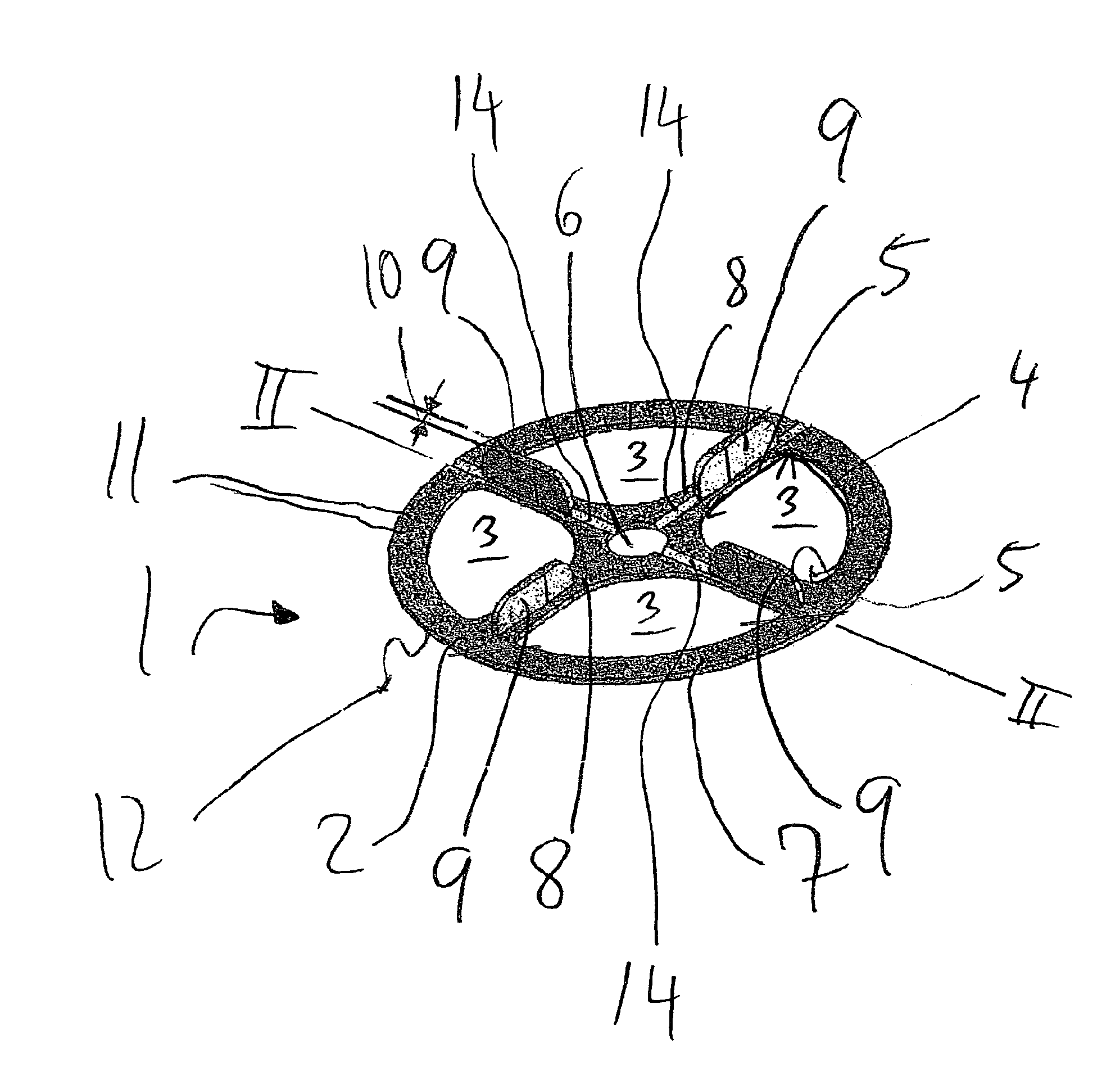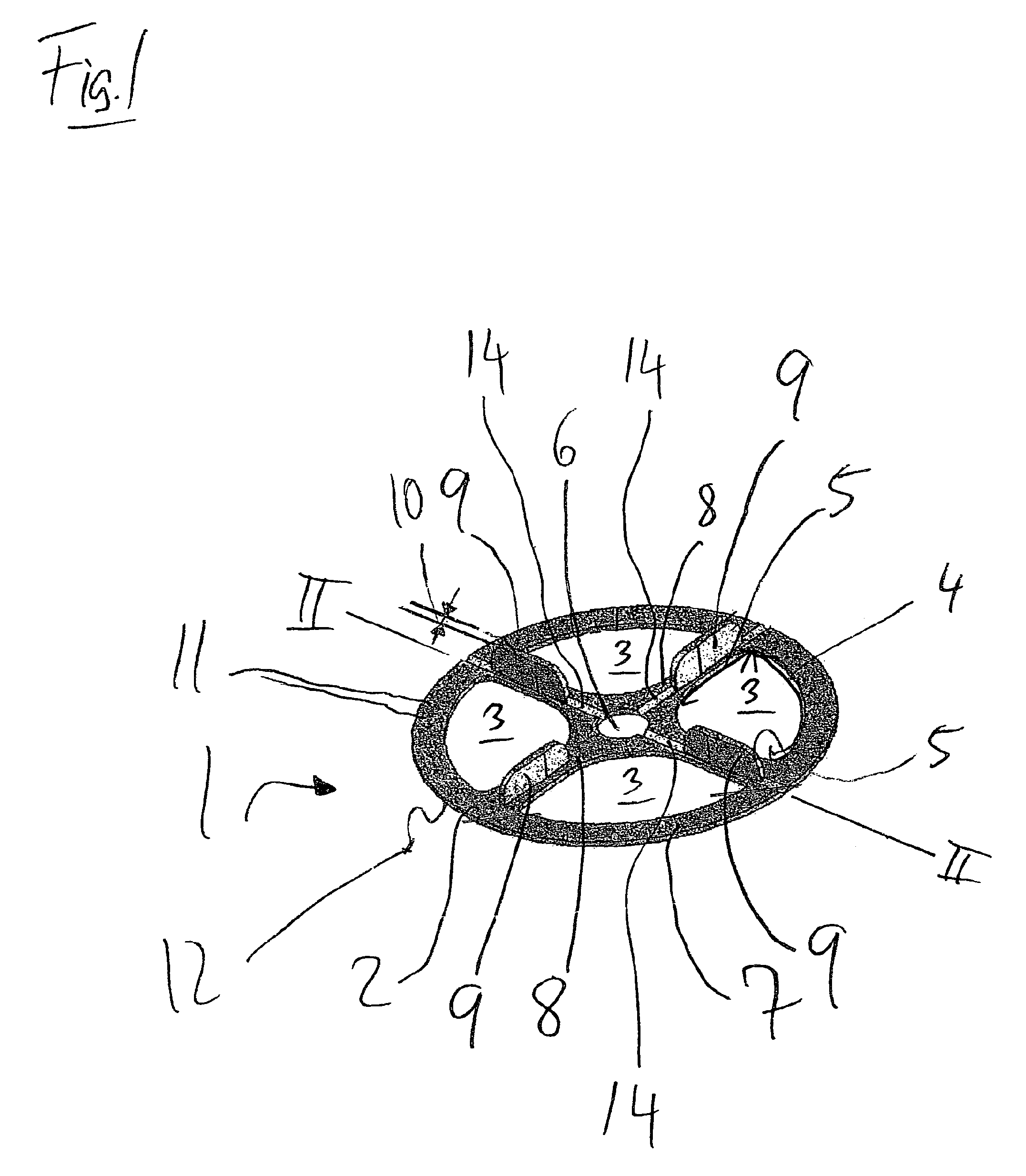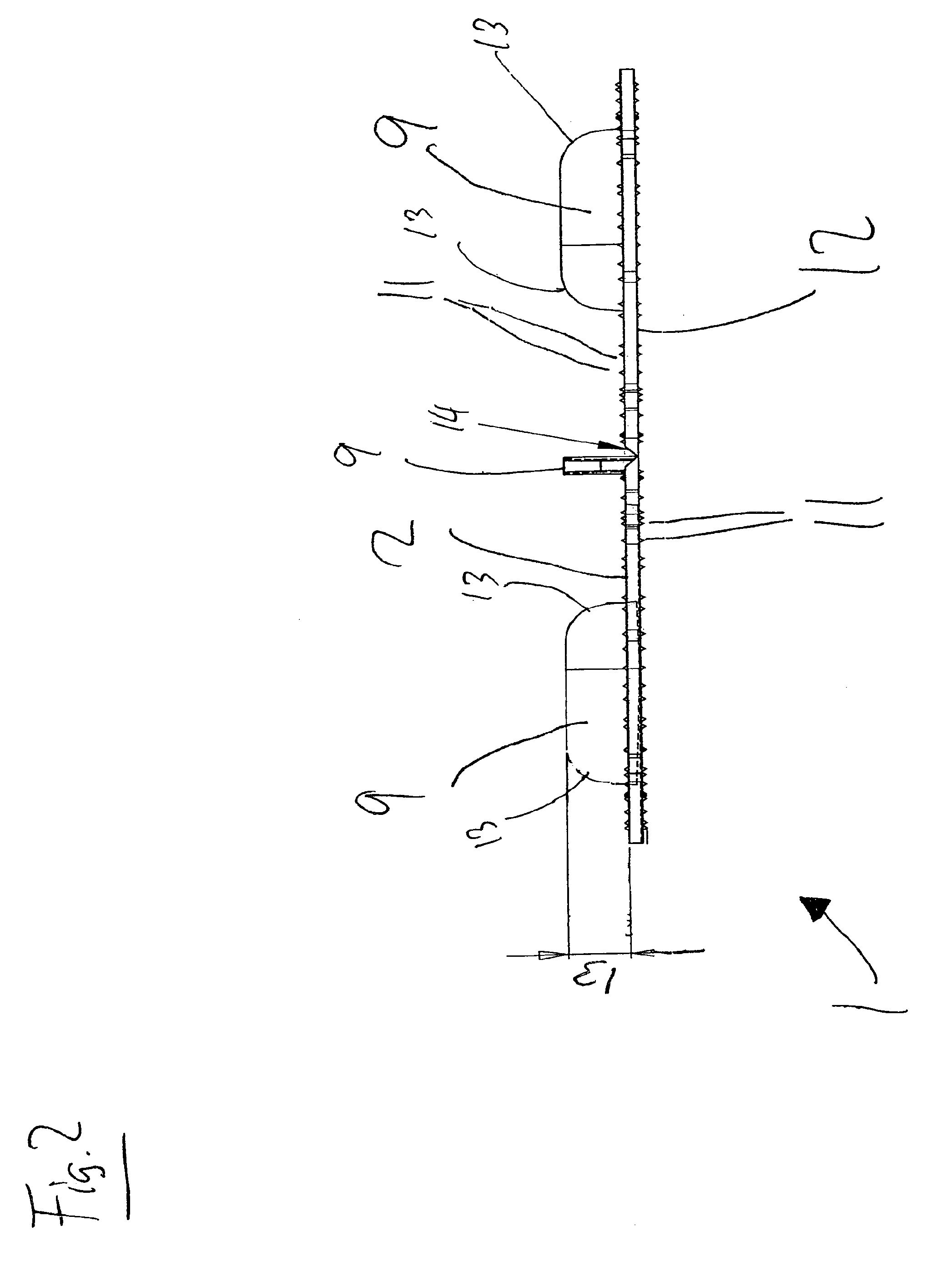Laying aid for tiles
a technology for laying aids and tiles, applied in the field of laying aids for tiles, can solve the problems of inconvenient use, lack of stability, and inability to assist in achieving the uniformity of tile coverings, and achieve the effects of high surface hardness, high modulus of elasticity, and resistance to customary tile adhesives
- Summary
- Abstract
- Description
- Claims
- Application Information
AI Technical Summary
Benefits of technology
Problems solved by technology
Method used
Image
Examples
Embodiment Construction
[0031]FIG. 1 shows a perspective view, in an oblique angle from the top, of one preferred embodiment of a laying aid 1 according to the invention, having a tile-supporting region 2. Overall, the laying aid 1 has a disk shape with a circular contour. The tile-supporting region 2 is interrupted by four identical cutouts 3. The cutouts 3 essentially have the shape of a sector of a circle, i.e., a circular surface, which is delimited by a circular arc 4 and two circle radii 5. The corners of the circular sector are rounded.
[0032]A circular cutout 6 is present in the center of the laying aid 1. Thus, the tile-supporting region 2 is composed of an annular section 7 and four spoke-like sections 8 which are oriented at an angle of 90° relative to one another. A spacer web 9 is situated on each spoke-like section 8. Each spacer web 9 is situated at the level of the cutouts 3 in the radial direction with respect to the spoke-like section 8. The height of each spacer web 9 extends perpendicula...
PUM
 Login to View More
Login to View More Abstract
Description
Claims
Application Information
 Login to View More
Login to View More - R&D
- Intellectual Property
- Life Sciences
- Materials
- Tech Scout
- Unparalleled Data Quality
- Higher Quality Content
- 60% Fewer Hallucinations
Browse by: Latest US Patents, China's latest patents, Technical Efficacy Thesaurus, Application Domain, Technology Topic, Popular Technical Reports.
© 2025 PatSnap. All rights reserved.Legal|Privacy policy|Modern Slavery Act Transparency Statement|Sitemap|About US| Contact US: help@patsnap.com



